When it comes to identity, security, and user experience in the Web3 world, one of the most important projects that comes to mind is undoubtedly the Ethereum Name Service (ENS). By converting crypto wallet addresses into human-friendly domain names, ENS not only simplifies transactions with names like "vitalik.eth" but also allows you to create your personal digital identity. ENS simplifies sending cryptocurrencies, reduces the margin of error, and aims to be a cornerstone of the decentralized internet. So, what exactly is ENS, how does it work, how to obtain it, and why has it become so important? In this guide, we will cover every detail of the Ethereum Name Service, from its history and current developments to its technical infrastructure and use cases.
Definition and Origins of ENS
Ethereum Name Service (ENS) is a decentralized system that provides a domain name service for Ethereum by converting crypto addresses into human-readable names. Just as the Domain Name System (DNS) maps IP addresses to website names on the traditional internet, ENS maps long and complex Ethereum wallet addresses to short and memorable names like "vitalik.eth." This allows users to transfer assets using easy-to-remember ENS names instead of complex 42-digit addresses, significantly reducing the risk of typos and resulting losses. This convenience, especially considering the irreversible nature of blockchain transactions, both increases security and significantly improves the experience.
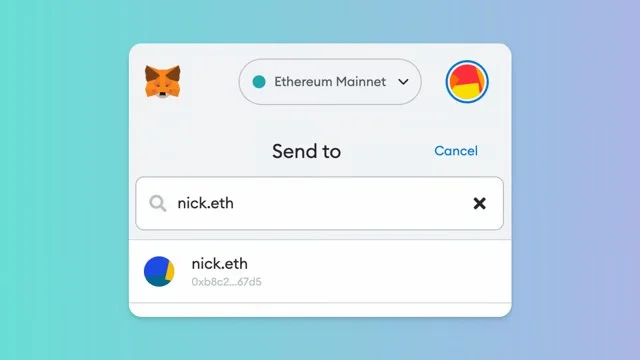
The origins of ENS stem from user experience issues experienced in Ethereum's early years. In 2016, Ethereum developer Nick Johnson recognized this need and proposed the idea. Development began under the auspices of the Ethereum Foundation. Johnson and his team, inspired by name resolution systems previously tested on projects like Namecoin, aimed to develop a more efficient solution specific to Ethereum. Rather than building a blockchain from scratch, ENS was built on Ethereum itself; the system was designed to work entirely with smart contracts. Prominent figures such as Alex Van de Sande from the Ethereum Foundation also contributed to the process.
ENS officially launched on the Ethereum mainnet on May 4, 2017. Initially, only domain names with the extension ".eth" were supported, and the system operated by auctioning names longer than seven letters. At the time, the method used was a Vickrey-style auction; users would place private bids for the .eth name they desired. When bids were opened, the highest bidder would receive the name, but only the second-highest bid would be paid. As long as the winner held the name, this fee was locked in the smart contract.
During this process, some domain names exchanged hands for significant amounts. For example, "exchange.eth" was sold for approximately 6,660 ETH, or around $600,000 at the time. These and similar sales resonated strongly within the crypto community and rapidly increased interest in the idea of a "digital domain name."
Immediately after launch, the ENS project continued to grow rapidly, supported by a $1 million grant from the Ethereum Foundation. In 2018, Nick Johnson used this funding to establish a Singapore-based non-profit company: True Names Ltd. (now ENS Labs). This allowed the project to become independent of the Ethereum Foundation.
The project's primary goal was to reach as many users as possible while maintaining its decentralized structure. The goal was also to be compatible with traditional DNS systems. Therefore, the team didn't limit itself to the .eth extension; Integration efforts have begun to allow the use of different extensions like .xyz and .luxe with the ENS infrastructure. Over time, some existing DNS domain names have also become resolvable through ENS.
ENS History: Major Milestones
The ENS project has reached its current status over the past few years through a series of technological developments and community initiatives. Let's take a look at the significant milestones ENS has achieved since its launch.
- 2017: Inception and initial registrations - ENS went live on the Ethereum mainnet in May 2017. Initially, only names with .eth extensions of seven or more characters were supported, and these names were distributed through a Vickrey-style auction system. Immediately after launch, hundreds of thousands of Ethereum addresses began matching ENS names. The launch was originally planned for March 2017, but was briefly postponed due to a technical vulnerability. After the necessary fixes were made, the system was seamlessly activated in May. During this period, the Ethereum Foundation provided both technical and financial support to the project, contributing to ENS's growth on a solid foundation.
- 2018: The Project's Institutionalization - 2018 was a turning point for ENS. The Ethereum Foundation provided Nick Johnson with a $1 million grant to support the project's development. Johnson used this funding to establish True Names Ltd., a Singapore-based non-profit. Thus, ENS began forging its own path, independent of the Ethereum Foundation. Later that year, with the integration of DNS-based domain name extensions such as .luxe and .kred into the ENS system, traditional domain name owners could also use their names on ENS.
- 2019: Permanent Registry System and New Features - In May 2019, ENS made a significant change, switching to a perpetual registry. Instead of auctions, a renewable model was adopted with an annual fee. With this system, names with the .eth extension began to be represented as NFTs under the ERC-721 standard. Users could now hold their names as NFTs directly in their wallets. That same year, short ENS names of 3 to 6 letters were first released and distributed in a two-month auction on OpenSea. With a new feature introduced in October, multiple blockchain addresses (e.g., BTC, LTC) and text-based information (e.g., email address, Twitter username) can be added to a single ENS name. This has transformed ENS into a decentralized identity platform equipped with multi-chain support and personal information, not just for Ethereum addresses.
- 2020: Ecosystem integrations - In 2020, ENS took significant steps toward its decentralized web vision. In January, IPFS and Swarm content hash records became active on ENS. This allowed users to not only link their ENS names to their wallet addresses but also use them to host decentralized websites. With this development, ENS began rapidly progressing toward becoming a cornerstone of the Web3 world. That same year, there was a noticeable increase in browser and wallet integrations. Browsers like Brave and Opera can now directly open sites with .eth extensions. ENS support on the wallet side also became widespread. Chainlink also provided financial support to ENS, renewing confidence in the project. As a result of these developments, the number of registered names on ENS has steadily increased.
- 2021: The DAO and ENS token launch - 2021 was one of the most critical turning points for ENS. In November, the ENS community decided to transition the project to a fully decentralized structure. With this decision, the ENS DAO was established, and the ENS token was launched to ensure governance. ENS tokens were distributed retroactively on November 8, 2021. This means that anyone who previously registered and used a .eth domain name was entitled to a certain amount of ENS tokens based on their usage time and participation. Of the total 100 million ENS supply, 25% was allocated to domain name owners, 25% to project contributors (developers, community members, etc.). The remaining 50% was transferred to the ENS DAO treasury. The airdrop process generated considerable interest. During the first week, users who requested the distribution received an average of $5,000-$6,000 worth of ENS tokens. Some users even earned tens of thousands of dollars from their airdrops. ENS's token price fluctuated between $40 and $85 in the early days, propelling the project to billion-dollar valuations. An innovative process was implemented during the token distribution process, such as requiring users to approve the governance agreement. Thanks to all these details, the ENS airdrop became known as "one of the most successful airdrops" in the crypto world. As of November 2021, ENS became a fully community-controlled protocol.
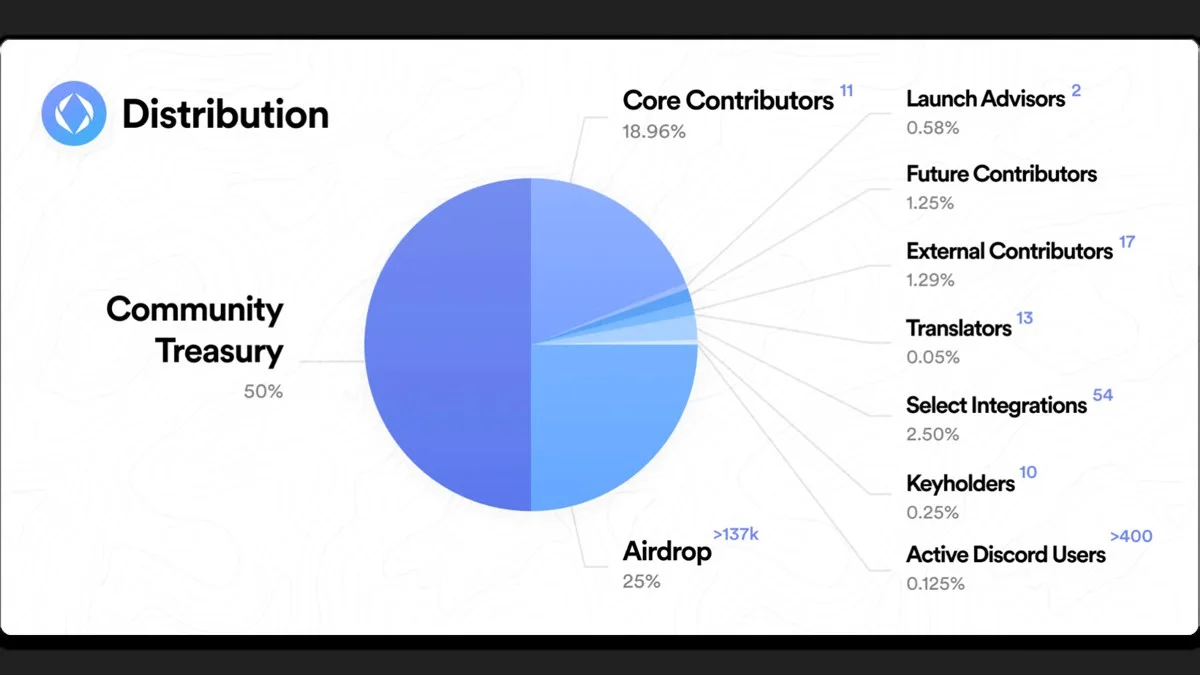
- 2022: Explosive Growth - While the crypto market experienced some ups and downs in 2022, the outlook for ENS was much brighter. Demand for ENS domain names increased significantly, particularly during the summer months. More than 430,000 new .eth names were registered in September alone, the highest number ever seen in a single month. By the end of the year, the total number of ENS registrations had surpassed 2.8 million. This means that 80% of all registrations since 2017 occurred in 2022 alone. In short, it was a record year for ENS. During this period, short and rare names like "000.eth" sold for high prices. For example, 000.eth sold for 300 ETH, equivalent to millions of dollars at the time. Such sales further fueled interest in three-digit ENS names and created a new user base trading domains for investment purposes. 2022 was also a very productive year for the ENS DAO. In September alone, $4.3 million was generated from registration renewal fees.
- 2023: Technological improvements and scaling - 2023 was a year of significant technological updates for ENS. The most notable innovation was the ability to turn subdomains into independent NFTs with the Name Wrapper feature. For example, a company can define subdomains like product.marka.eth under marka.eth and distribute them. Another major development was ENS's integration with Layer-2 networks. Thanks to the CCIP-Read solution announced in July, ENS subdomains became available on platforms like Coinbase's Base network. The success of this integration was demonstrated by the registration of over 750,000 *.base.eth in the first month of its launch. By the end of the year, ENS had reached a total of 3.5 million registered names and over 800,000 users, further increasing its reach.
- 2024: In 2024, ENS entered a new era, both technically and institutionally. The Cayman Islands-based ENS Foundation was established to ensure the sustainability of the project. While the Foundation handled the legal affairs, ENS Labs continued to focus on technical development.
- 2025: Throughout the year, progress toward technological integrations, Web3 identity solutions, and L2 (Layer-2) support accelerated. As of October, the ENS coin price was around $15.
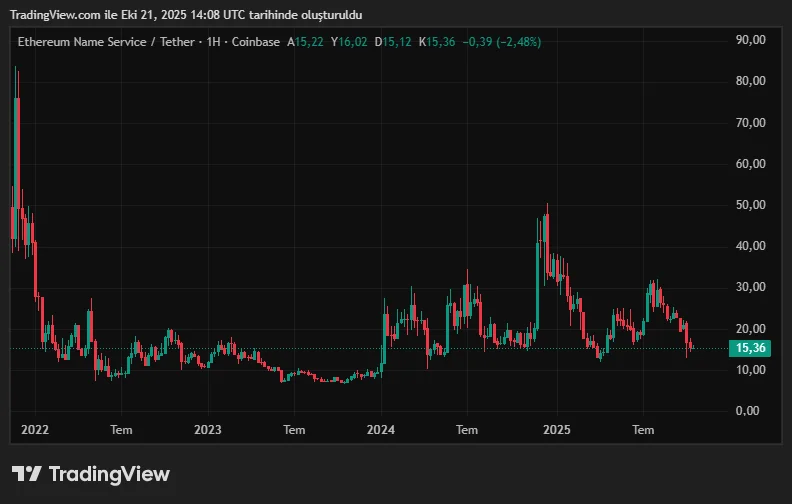
Why is ENS Important?
It's no coincidence that ENS has gained popularity so quickly and become a cornerstone of the Web3 ecosystem. So, what makes ENS different and important? Below, we'll discuss the key advantages and features of ENS under various headings.
Human-Friendly Addresses and Ease of Transactions
Entering long and complex addresses when sending cryptocurrency can often be a source of stress. Even a small typo can lead to the loss of all funds. This is where the Ethereum Name Service (ENS) comes in. ENS converts complex hexadecimal addresses into a format that's easily readable.
For example, instead of a complex address like 0xb8c2...a267d5, simply typing foundation.eth makes addresses more memorable and eliminates the risk of misspellings. Now, when someone wants to send you ETH, they don't have to copy and paste your wallet address; they simply type your ENS name, for example, "ahmet.eth." The system automatically redirects them to the correct address represented by that name. This is particularly convenient for mobile users, as copy-paste errors or character confusion are a thing of the past.
Web3 ID and a Single Digital Identity
ENS isn't just a system that simplifies addresses. It's also a decentralized digital identity infrastructure. An ENS name can be central to your entire digital identity.
For example, consider the name alice.eth. This name isn't just a wallet address; it can also include the owner's email address, username X, website link, or other social media profiles. All of this information is added to the text records on the ENS. Thus, alice.eth essentially becomes the "username" in the Web3 world.
Many sites today support the "Sign-In with Ethereum" feature. This allows users to log in with their ENS names instead of entering a password or email address. This paves the way for ENS names to become a universal user identity in the Web3 universe in the future.
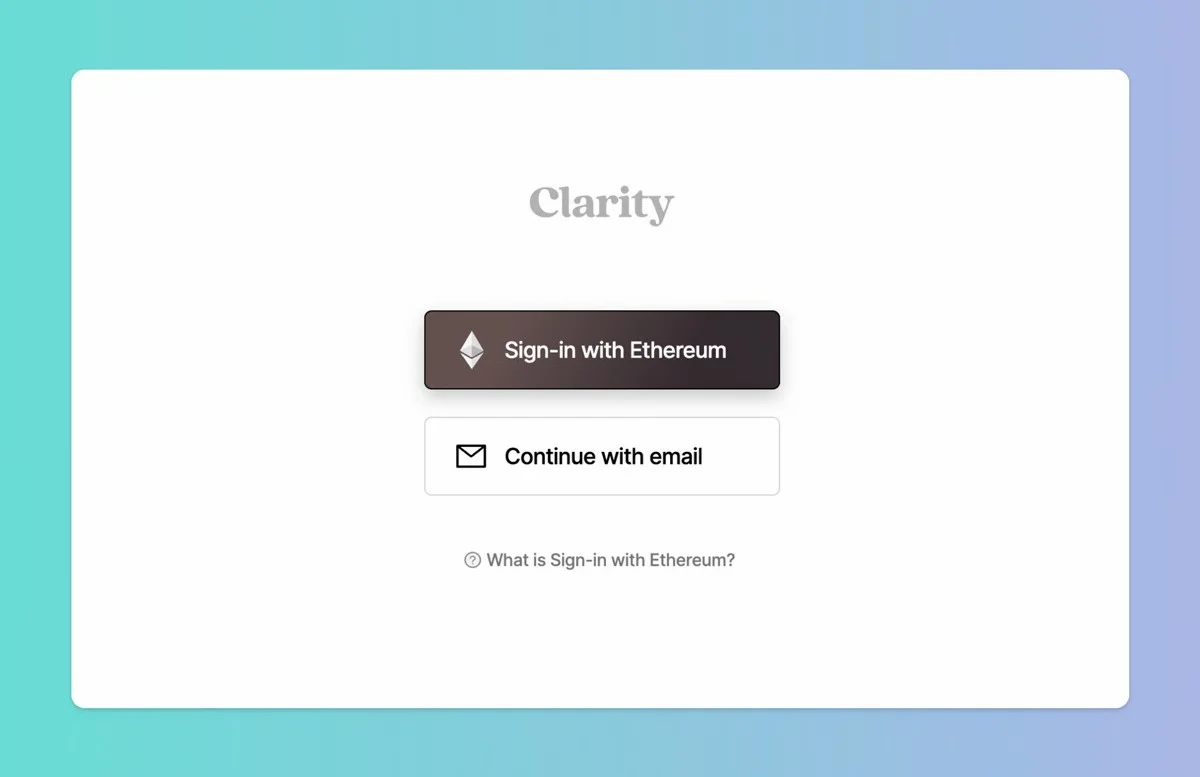
ENS also stands out with its support for subdomains. For example, if a company has the name company.eth, it can create sub-identities for its employees, such as ali.sirket.eth. This way, everyone can have their own on-chain identity.
Decentralization and censorship resistance
Another aspect that makes ENS so special is that it is built on a completely decentralized infrastructure. While authorities like ICANN or private registrars manage domain names in traditional DNS systems, ENS names are held directly through smart contracts on the Ethereum blockchain. This means that you completely control a .eth domain name you own. No institution or company can take it from you, close it, or modify it.
This feature is especially important in environments with high censorship risks. Thanks to ENS, when a website hosted on IPFS is associated with the .eth extension, that site becomes much more resistant to traditional internet blocking. Users can access these sites by directly typing example.eth in browsers like Brave. Content can also be viewed in other browsers through gateways like example.eth.limo.
Broad ecosystem support
Another reason ENS has become so powerful is its compatibility with nearly the entire crypto ecosystem. Today, many wallets, exchanges, and dApps have integrated ENS support into their systems. For example, in wallets like Metamask, Coinbase Wallet, or Trust Wallet, it's possible to make direct transfers by typing the ENS name instead of the address. Block explorers like Etherscan automatically display ENS names, and OpenSea includes ENS domains among NFT collections.
ENS supports not only Ethereum addresses but also various blockchain addresses. For example, Bitcoin, Dogecoin, or Litecoin addresses can be added to ahmet.eth. This allows a user to send BTC to Ahmet's Bitcoin address simply by typing ahmet.eth from a compatible wallet.
Thanks to its extensive integration network, users can be identified and transacted on different platforms with a single name.
Community Management
One of the main reasons ENS has become so important is its entirely community-driven structure. With the launch of the ENS token in November 2021, the project launched the ENS DAO (decentralized autonomous organization). Since then, decisions that determine the protocol's fate—such as registration fees, updates, and treasury usage—are now made by the community. The ENS token is at the heart of this system. Each token grants its holder voting rights; the more tokens you own, the more say you have. For example, before the DAO makes any changes to registration fees, it puts them to a vote, with a majority decision determining the final decision. Thanks to this democratic structure, ENS is governed entirely by the collective will of its users, without being controlled by any single company or investor.
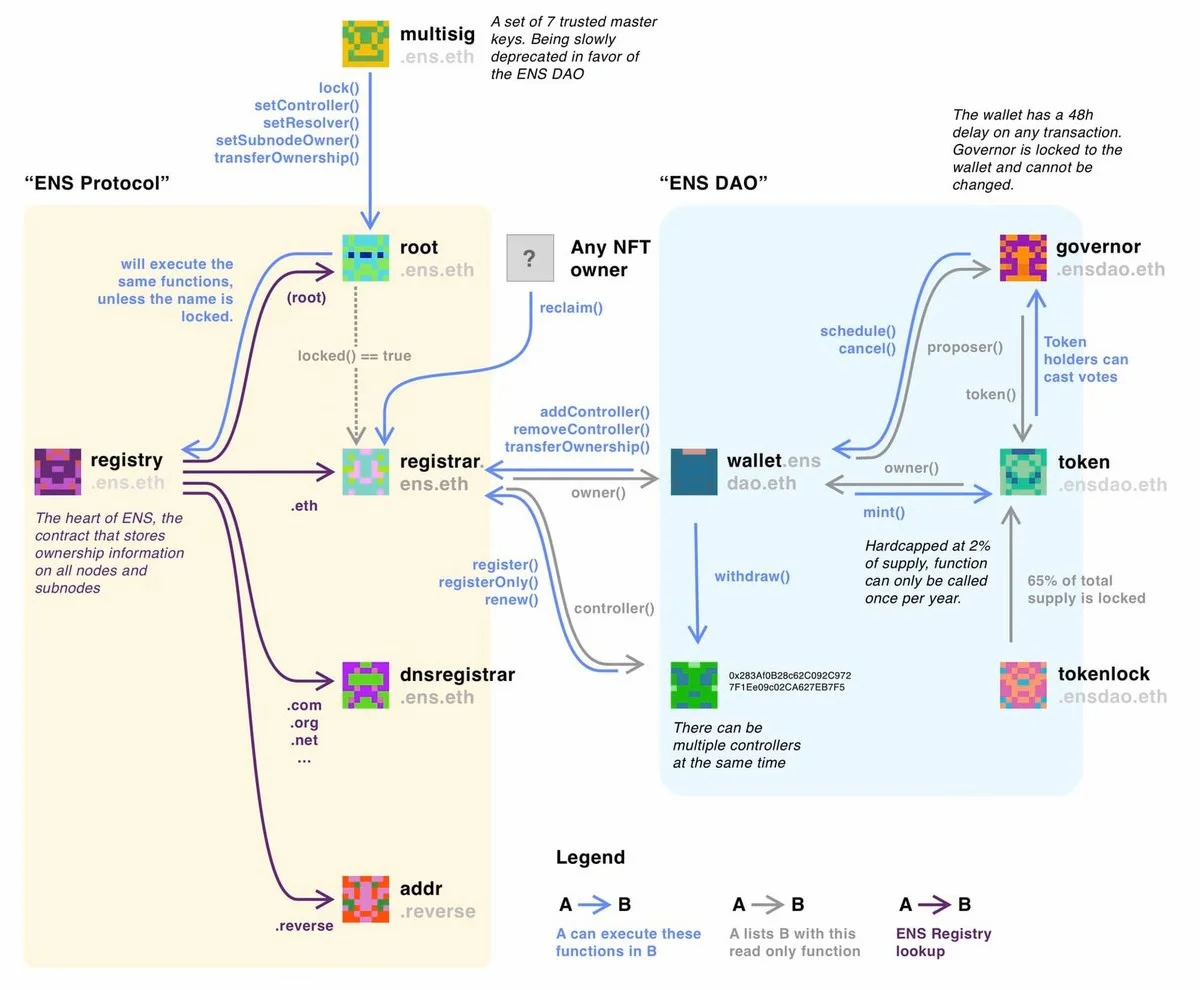
ENS's economic model was designed with the same approach. When a user obtains a new ENS name or renews an existing registration, the fee is transferred directly to smart contracts on the Ethereum network. These revenues are automatically transferred to the ENS DAO treasury. This means that as the number of registrations increases, the DAO's treasury grows. When the project was first established, 50% of the total supply (50 million ENS) was transferred to the treasury. This fund, combined with user payments, has created a strong and sustainable financial structure.
ENS DAO uses these funds not only for the development of ENS but also to support open-source projects that contribute to the Ethereum ecosystem. This system has created a self-funded, community-driven economy.
ENS Founder and Project Team
Ethereum Name Service (ENS) was created by experienced developers in the Ethereum ecosystem and has grown with strong community support. The project's founder is Nick Johnson (nick.eth), who previously worked as a software engineer at Google. Johnson developed the idea for ENS and assumed technical leadership for the project during his time at the Ethereum Foundation. Another key member of the team is interface developer Alex Van de Sande (avsa.eth). These two led the core team that prepared for the 2017 launch.
In 2018, Johnson founded a non-profit organization called True Names Ltd. (now ENS Labs Ltd.) with a grant from the Ethereum Foundation. This Singapore-based team continues to develop and update ENS's core software. The team featured prominent figures such as smart contract engineer Jeff Lau and longtime community communications manager Brantly Millegan.
ENS has grown remarkably without any venture capital investment. Initial funding came solely from the Ethereum Foundation and a 2020 Chainlink grant. No exclusive shares were allocated to founders or investors in the token distribution; all tokens were distributed directly to users and contributors. Thanks to this transparent structure, ENS is considered a "fully public" project.
Many individuals, including Ethereum founder Vitalik Buterin, have long supported ENS. Even centralized companies like Coinbase have voting rights within the ENS DAO. On the DAO side, various working groups, such as those dedicated to ecosystem, technology, and public goods, meet regularly, with community revenues going towards both the development of the ENS and open-source projects within the Ethereum ecosystem.
Frequently Asked Questions (FAQ)
Below are some frequently asked questions and answers about the Ethereum Name Service (ENS):
- What is the Ethereum Name Service (ENS) and what does it do?: ENS is a system running on Ethereum that converts long crypto addresses into readable names. For example, you can use "username.eth" instead of 0x..., making transactions easier and more secure. The ENS token serves as a governance tool and grants its holders voting rights within the DAO.
- What networks does ENS work on?: ENS primarily runs on the Ethereum mainnet, but some Layer-2 networks like Base also offer ENS support. Classic DNS domains like .xyz and .luxe can also be connected to ENS. So, while ENS is Ethereum-centric, it offers multi-chain functionality.
- Who founded ENS?: ENS was developed in 2017 by Nick Johnson and Alex Van de Sande within the Ethereum Foundation. After 2018, Johnson founded True Names Ltd. (ENS Labs) became independent. Today, governance is carried out by the community-based ENS DAO.
- When was the ENS coin/token launched, and what was its price like?: The ENS token was launched in November 2021 and traded in the $40–$85 range in the early days. Although it later fell below $10 depending on market conditions, it stabilized in the $15–$20 range after 2023. Its all-time high was $85 in November 2021.
- What does the ENS token do?: The ENS token provides voting rights in the DAO's governance. Token holders can vote or delegate on matters such as registration fees and updates. ENS tokens are tradable, but name registration and renewal fees are still paid in ETH.
- Has an airdrop been made, or will there be another one?: Yes, a large airdrop was made to .eth holders in November 2021, distributing 50% of the total supply. This was a one-time reward process. The ENS team has clearly stated that they have no new airdrop plans.
- Is ENS reliable, and is it worth investing in?: ENS has a secure smart contract infrastructure that has been operating since 2017. It is considered reliable because it is one of Ethereum's most widely used protocols. However, since the ENS token price is volatile, investment decisions should be made based on personal risk tolerance.
- What other features does ENS have?: ENS comes with many features, including reverse registration, subdomains, and content hashing. Users can add websites, avatars, or social accounts to their names. With the Name Wrapper update coming in 2023, transferring subdomains as NFTs is also possible.
Your internet identity is now just a .eth away. Explore the JR Crypto Guide to stay up-to-date on developments in the ENS and Web3 domain world.